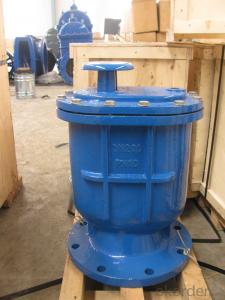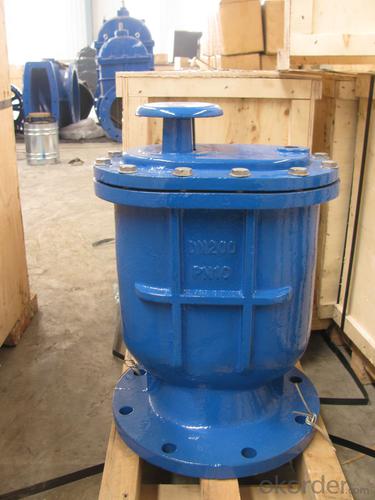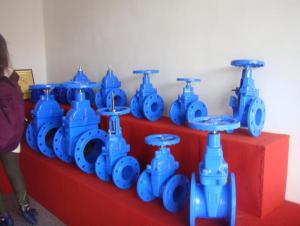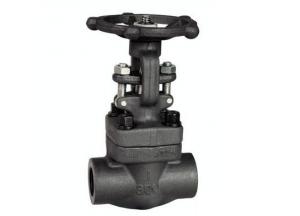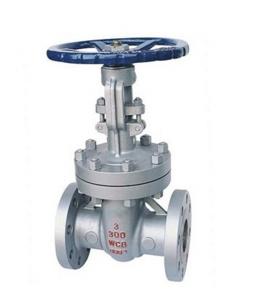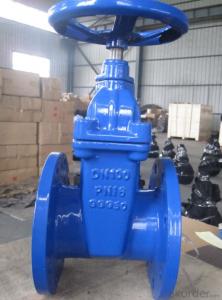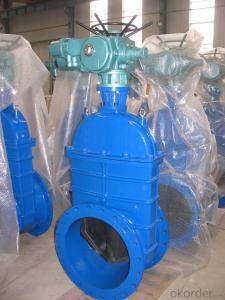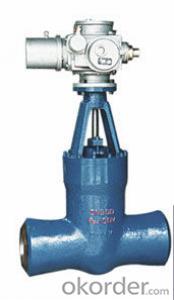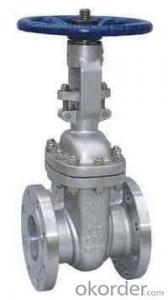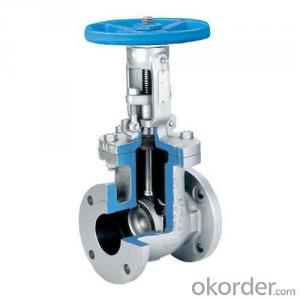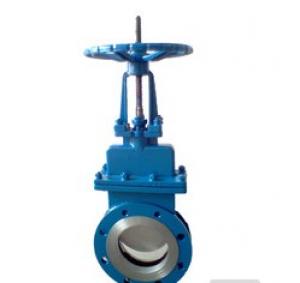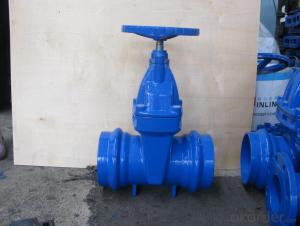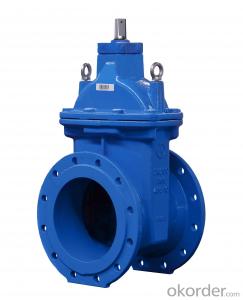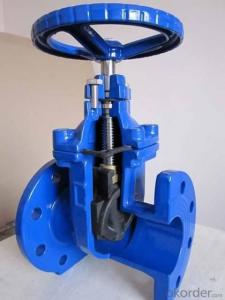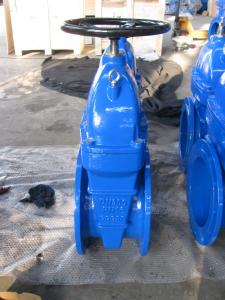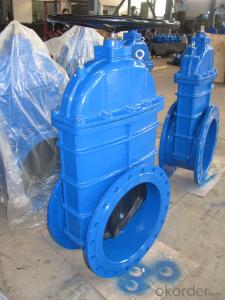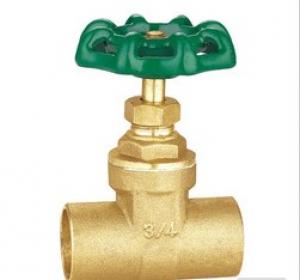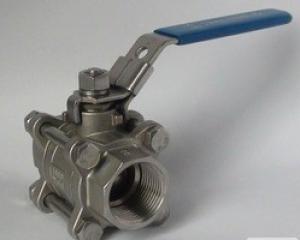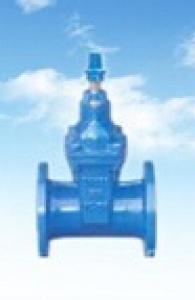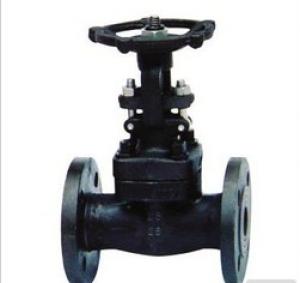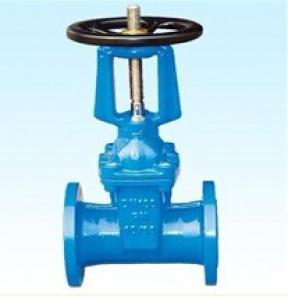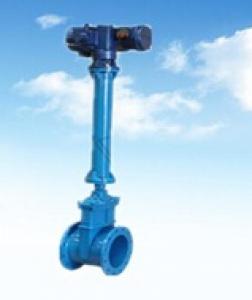Gate Valve Cast Irron /Ductile Iron Metal Seated NRS
- Loading Port:
- Tianjin
- Payment Terms:
- TT OR LC
- Min Order Qty:
- 200 kg
- Supply Capability:
- 10000 kg/month
OKorder Service Pledge
OKorder Financial Service
You Might Also Like
.1.Structure of Gate Valve Description:
A gate valve, also known as a sluice valve, is a valve that opens by lifting a round or rectangular gate/wedge out of the path of the fluid. The distinct feature of a gate valve is the sealing surfaces between the gate and seats are planar, so gate valves are often used when a straight-line flow of fluid and minimum restriction is desired. The gate faces can form a wedge shape or they can be parallel. Gate valves are primarily used to permit or prevent the flow of liquids, but typical gate valves shouldn't be used for regulating flow, unless they are specifically designed for that purpose. Because of their ability to cut through liquids, gate valves are often used in the petroleum industry. For extremely thick fluids, a specialty valve often known as a knife valve is used to cut through the liquid. On opening the gate valve, the flow path is enlarged in a highly nonlinear manner with respect to percent of opening. This means that flow rate does not change evenly with stem travel. Also, a partially open gate disk tends to vibrate from the fluid flow. Most of the flow change occurs near shutoff with a relatively high fluid velocity causing disk and seat wear and eventual leakage if used to regulate flow. Typical gate valves are designed to be fully opened or closed.When fully open, the typical gate valve has no obstruction in the flow path, resulting in very low friction loss.
2. Main Features of the Gate Valve:
• Valve body cavity using non-toxic epoxy resin,both inside and outside flashboard completely is coated with rubber
• Free of water pollution
• High manufacturing accuracy
• High strength
• Environmental protection and energy saving
• Good visual effect
3. Images
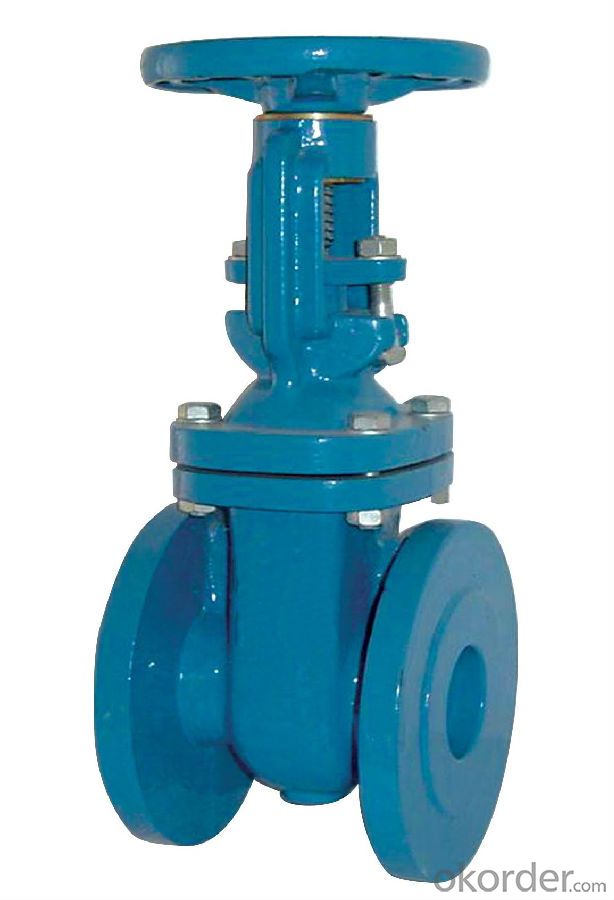
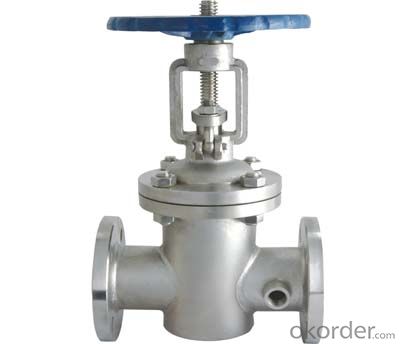
4. Gate valve Specification
1) Product information: the gate valves supplied are mainly used for adjusting water, steam, oil, gas, and natural gas in chemical industries
2) Standards: AWWA, DIN3352 F4/F5, BS5163, BS5150
3) Connection type: flanged type, push-on type, mechanical joint type, plain ends type
4) Material:
a) Body : Ductile Iron GGG500-7
b) Wedge : D/I , core fully vulcanized with NBR or EPDM rubber
c) Wedge Nut : Brass
d) Stem : Stainless steel , BS970 431S29 or DIN17440x20Cr13
e) Gasket : NBR
f) Bonnet : GGG500-7
g) O ring : NBR
h) Washer : Carbon steel or Stainless steel .
5) Size: 50-400mm/2" - 16"
6) Pressure grade: PN10, PN16
7) Coating:
a) Fusion-bonded epoxy 200-250 microns inside and out side
b) Coating as per customers' requirement
8) Package : carton for each item , wooden boxes outside
5.FAQ
1. What's are the characteristics of gate valve?
The distinct feature of a gate valve is the sealing surfaces between the gate and seats are planar, so gate valves are often used when a straight-line flow of fluid and minimum restriction is desired. The gate faces can form a wedge shape or they can be parallel.
2. What is the work principle of gate valve ?
The gate faces can form a wedge shape or they can be parallel. Gate valves are primarily used to permit or prevent the flow of liquids, but typical gate valves shouldn't be used for regulating flow, unless they are specifically designed for that purpose. Because of their ability to cut through liquids, gate valves are often used in the petroleum industry.
3. What is the structure?
Bonnets provide leakproof closure for the valve body. Gate valves may have a screw-in, union, or bolted bonnet. Screw-in bonnet is the simplest, offering a durable, pressure-tight seal. Union bonnet is suitable for applications requiring frequent inspection and cleaning. It also gives the body added strength. Bolted bonnet is used for larger valves and higher pressure applications.
- Q: What are the advantages and disadvantages of flat gate valves?
- The advantage of flat gate valve is that the flow resistance is small, and the flow resistance is similar to the flow resistance of short valve. The flat gate valve with guide hole is installed on the pipeline and can be directly cleaned with the cleaner. As the gate is sliding on the two seat surface, the flat gate valve can be applied to the medium with suspended particles, and the sealing surface of the flat gate valve is actually positioned automatically. The seat seal surface is not subject to thermal deformation of the valve body. Moreover, even if the valve is closed in cold condition, the thermal elongation of the stem will not cause the seal to be subjected to overload. The length of the structure is much shorter than that of the ball valve, and it is easier to start. Light plate gate valve is more refined, but the effect is exactly the same.The disadvantage of flat gate valve is that when the medium pressure is low, the sealing force of the metal sealing surface is insufficient, so as to achieve satisfactory sealing. On the contrary, when the medium pressure is high, if the sealing surface is not lubricated by the system media or foreign media, often opening and closing may cause the sealing surface to wear too much. Another disadvantage is that the circular motion of the circular gate in the circular flow, only when it is at the valve closed position of 50%, this valve is more sensitive to flow control. Moreover, the gate will produce severe vibration when it breaks the high-speed and dense medium flow. The valve seat can also be throttled if the seat is made of a V - shaped opening and is tightly oriented to the gate.
- Q: what are their applicable conditions? Advantages and disadvantages?
- The gate valve is one of the simplest valves. Generally manual, most of the electric valve failure, as a manual. Butterfly valve is more, I saw the pneumatic butterfly valve, that is, with gas control closed, general and solenoid valve matching.Without strict conditions and advantages and disadvantages, of course, the equipment requires a relatively high degree of automatic control. I can check it out on Baidu.
- Q: What is a protective gate valve? What is gate valve knowledge?
- Door gate, refers to the design of anti blocking nuclear explosion shock wave from the pipe into the project inside the valve, composed of a valve body, valve seat, valve plate and wave absorbing device, wave absorbing device leakage hole in the valve body, valve leakage hole is a cylindrical hole, wave valve has two door sealing groove between the cylindrical hole and wave valve double seal ring seal, between the valve body and the flange is double sealing ring seal.
- Q: What are the meaning of the cast rigid gate valves z41h-16c?
- According to the provisions of the JB/T 308-2004 valve type programming method:Z== gate valve4== flange connection1== rigid single gateH== sealing surface material: Cr13 stainless steel16== pressure rating: 1.6MPaC== body material: carbon steel
- Q: What is the allowable leakage rate of the gate valve D?
- In GB/T 13927, the leakage rate of the valve is divided into 10 grades, namely: A, AA, B, C, CC, D, E, EE, F, G class. And stipulates that when the order contract does not specify, the metal sealing valve according to D requirements.
- Q: What are the structural differences between parallel and wedge valves?
- The structure of globe valve and gate valve. What does this article introduce first?What is parallel gate valve?The sealing cover is parallel to the vertical center line, so the sealing surfaces of the valve body and the gate are parallel to each other. This gate valve is the most common double gate plate, in order to shut down, so that the valve and gate two sealing surface contact closely asked, often used in two ram double sided thrust wedge block. Thus, when the valve is closed, the double side thrust block is contacted with the bottom of the valve body and is gradually stressed.
- Q: Generally, how big is the diameter of the installation flange plate gate valve?
- Under normal circumstances:Flanged gate valves for piping over DN50,DN50 (below) can be made of wire or gate valves, or flanged gate valves (flanged valves or welded gate valves)
- Q: About fire valve is gate valve or butterfly valve problems?
- Disease is generally in accordance with the design requirements, regardless of the butterfly or tie hair to meet the requirements, are two-way valve.
- Q: What is the difference between the cut-off valve and the gate valve?
- Selection of stop valve:There are two ways to install the valve, one is the media flow from the top of the spool, the advantage is that when the packing is not under pressure, the pressure can be replaced before the valve packing, there is a long service life characteristics. Another is the media from the bottom of the spool into, and its shortcomings are driving torque is large, is 1 times above the flow, the stem by the axial force of large, easy to bend the stem. Generally suitable for small caliber manual stop valve, to stop the valve closed, the media acting on the spool of force is not greater than 350kg limit. Electric cut-off valve is generally used to enter the media from the top way.Selection of gate valve and stop valve:Valve than the valve structure is simple, better sealing, manufacturing and maintenance to be convenient; shortcomings are fluid resistance, power, and opening and closing efforts. Gate valve, stop valve are fully open, fully closed valve, suitable for making cut off, it is not suitable for use as regulating valve. The application process should pay attention to the characteristics of the valve when selecting. Small pipes and better sealing performance generally use cut-off valve; in the steam system and large diameter pipeline, due to fluid resistance is small, suitable for use gate valve.
- Q: The legend of gate valve and stop valve
- When the valve is installed, the medium can enter from the bottom of the valve core and enter the two way from the top. Medium from the spool into the advantages of the valve closed when the packing is not under pressure, can extend the service life of the packing, and can be pressure in front of the valve in the case of replacement of packing work. Medium from the spool into the bottom of the shortcomings of the valve driving torque is larger, about 1.05~1.08 times above the entrance, the stem by the axial force of large, easy to bend the stem. To this end, the media from below to enter the way, generally only applicable to small caliber manual stop valve, to the valve closed, the media acting on the spool of force is not greater than 350kg limit. Electric cut-off valve is generally used to enter the media from the top way. The disadvantage of the medium entering from the top is just the opposite of the way it is entered below.Compared with the gate valve, the utility model has the advantages of simple structure, good sealing performance, and convenient manufacture and maintenance. The disadvantage is that the liquid resistance is large, and the opening and closing force is large. Gate and globe valves are fully open closed type valve, cut off or connected as the medium use, not as a control valve.The range of application of stop valves and gate valves is determined by their characteristics. In the smaller passages, the cut-off valve is used when required for better shutoff; in the steam pipe and the large diameter water supply pipe, the gate valve is generally used because of less fluid resistance.
Send your message to us
Gate Valve Cast Irron /Ductile Iron Metal Seated NRS
- Loading Port:
- Tianjin
- Payment Terms:
- TT OR LC
- Min Order Qty:
- 200 kg
- Supply Capability:
- 10000 kg/month
OKorder Service Pledge
OKorder Financial Service
Similar products
Hot products
Hot Searches
Related keywords
